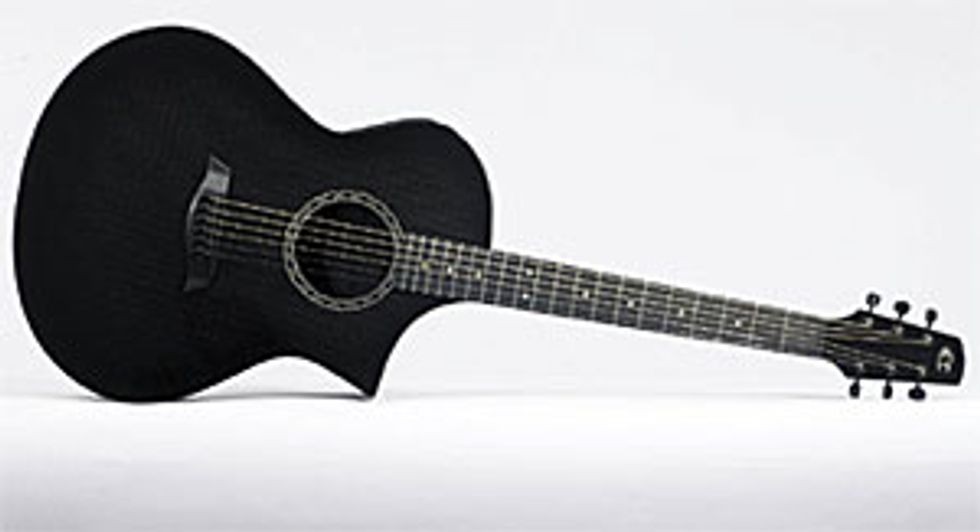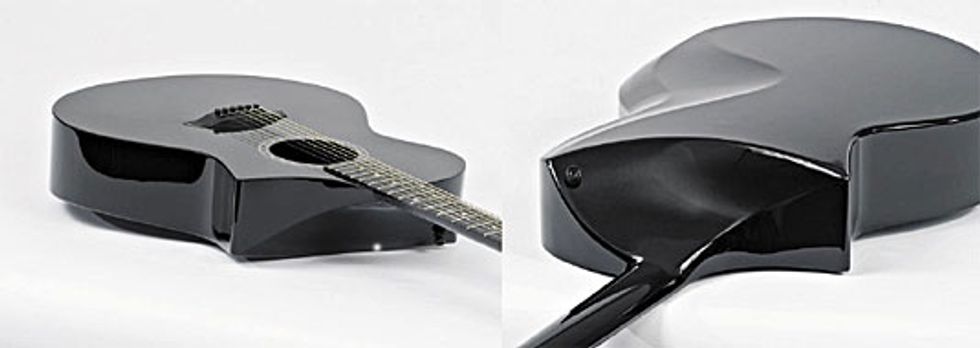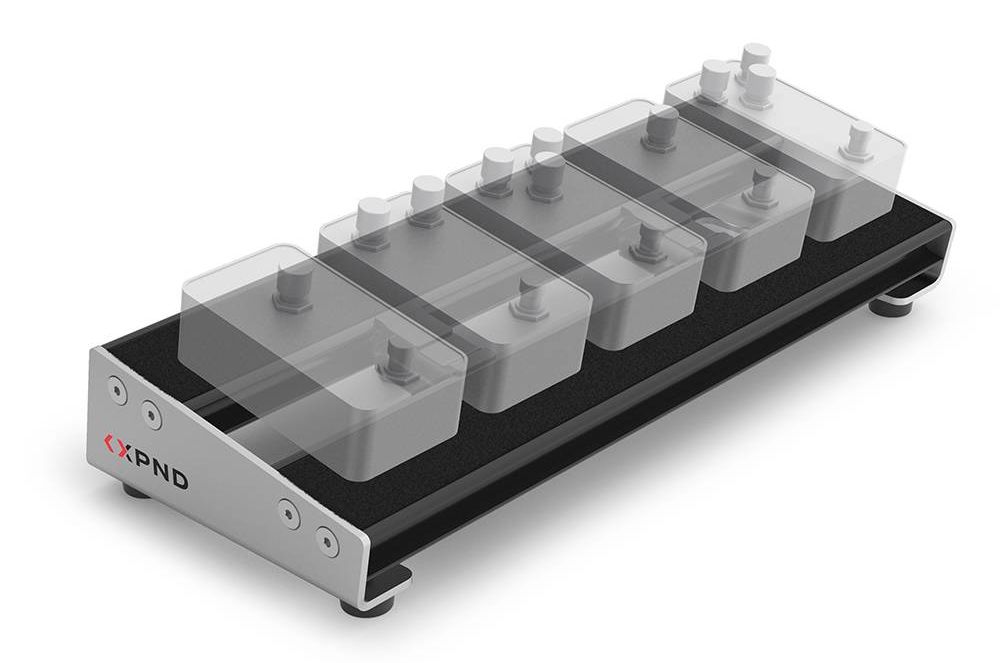
Discovery
I begrudgingly accepted him thrusting the guitar into my hands, looking more like something that should be bolted underneath a late-model Acura than used to make music. He identified it as a Composite Acoustics Bluegrass Standard model; the name indicated that, just perhaps, he had been listening to me all along. Grabbing the guitar, I noticed that the neck wasn’t ridiculously thin. In fact, it was what could be referred to as substantial. In the past, builders using composite materials forgot that just because something could be done didn’t mean it should be, and pencil-thin necks were often the misguided result. I reckoned then it was at least worthy of a thorough checking-out.
pulled a pick out of my pocket and played – what else? – a bluegrass riff in G. My whole world was suddenly set on its ear. All the preconceptions I had been cultivating – graphite equals cold, graphite equals dead, graphite equals weird-sounding upper harmonics – swiftly flew out the window. I left soon thereafter, partly due to other obligations, partly to digest what had just happened.
As soon as I returned to the office, and spent some time discussing the MusicWood Coalition and the future of alternative materials in instrument design with the staff, I realized we had to get one in for review – graphite is certainly poised to be a part of guitar culture in the future. A quick call and short conversation with a gentleman named Gerd, and we had a GX Performer on the way.
The Arrival
When the guitar arrived, the temperature was in the 50s, so I wasted no time in unpacking the GX, giving it no acclimation time. I grabbed a G chord almost as soon as I could pull the guitar out of its case and it rang out clearly and in tune, with the relief being just where it should be.
If anything, I found the GX even more impressive than the Bluegrass model, since it has all of the great playability and close to the same volume as its bigger sibling, while coming in at a smaller, more comfortable Grand Auditorium size, and sporting a rather severe – and very cool looking – cutaway that occupies the area normally reserved for the neck heel. Pitting it in a seemingly unfair comparison with my D-18V, the GX once again held its own; not failing in the expected bass registers, where cutaways tend to have issues, but in its inability to deliver that extra little amount of harmonic sparkle on the high-end, just as the notes and chords begin to decay. Mind you, this was from out front, about ten feet away and three or four feet up from the soundhole, where the sound really begins to focus.
From the player’s vantage point, the guitar feels quick and responsive, with the only negative being a little boxiness when driven too hard. The GX shrugged off everything thrown at it, whether it was ham-fisted flatpicking or delicate fingerstyle arrangements, which is a lot to ask from any Grand Auditorium-sized guitar, let alone one from the future.

Composite Benefits
Earlier efforts in building guitars from composite materials left the braces out of the equation, because they weren’t needed structurally. Composite Acoustics figured out that, tonally, they were needed. Better is a subjective term, but this certainly makes their guitars deliver what we traditionally associate as good tone. Something else that is available using non-traditional materials and construction techniques is the ability to round contours to reduce the incidence of standing waves. Composite materials can be fashioned into other previously impossible shapes for various tone-shaping and ergonomic reasons.
If you are looking for a really nice guitar that can actually be taken out and played, this very well may be the one. It can be left in the trunk when you go grab a bite – out of sight and out of mind. It can be taken to the outdoor festival in July and played all day with no worries. It won’t crack. Let that point settle in a bit. That means no more anxiety about the humidity level in your case or your house, which in turn means no more case humidifiers. No more seasonal truss rod adjustments. Just play the thing, whenever, wherever you want. It is without a doubt the most viable travel guitar option out there, as well as a great instrument for festival performers. This guitar doesn’t shy away from anything.
The Final Mojo
As a kid growing up in Indiana, our library had some fascinating old books written in the ‘50s about living in the future. According to these books, we were all supposed to be driving around in nuclear-powered, three-wheeled rocket cars by the 1980s. That sounds decidedly cooler than a Toyota Prius to me, but that isn’t how things have worked out. I can accept that. What I have trouble accepting is the thought of my son, or one of his children in the future, not being able to get a great sounding acoustic, one that inspires them to pick it up and to play, maybe even write a few tunes. Composite Acoustics are doing their best to make it happen, and for that, I’m more than happy to trade my rocket car.
Composite Acoustics
MSRP $3350
compositeacoustics.com



















![Rig Rundown: Russian Circles’ Mike Sullivan [2025]](https://www.premierguitar.com/media-library/youtube.jpg?id=62303631&width=1245&height=700&quality=70&coordinates=0%2C0%2C0%2C0)






